The Shiseido Gallery is pleased to announce the exhibition Tsubaki-kai 2013 ― Shoshin (beginner's mind), to run April 12th (Fri) through June 23rd (Sun), 2013.
The Tsubaki-kai artists' exhibition group was created in 1947 to mark the post-war reopening of the Shiseido Gallery. The name “Tsubaki” comes from the Japanese word for “camellia,” the flower that has long been the symbol of the Shiseido. (“Kai” means “gathering” or “circle.”) In the decades since, the Tsubaki-kai exhibitions have become one of the Gallery's most popular and representative activities. The membership of the group has changed with each iteration over its nearly seventy years, and as of the 2010 conclusion of the Sixth Tsubaki-kai a total of eighty artists have participated.
This year, a new group of five artists will come together to start the Seventh Tsubaki-kai: Genpei Akasegawa, Naoya Hatakeyama, Rei Naito, Zon Ito, and Ryoko Aoki. Exhibitions by these artists will begin this year and continue over the course of the next five years.
The process of selecting these five participants was strongly influenced by a lingering consciousness of the devastating earthquake that struck Japan on March 11th, 2011, an event that has radically influenced the social environment around us. The disaster gave rise to a new movement to reconsider what is expected of art, and discussions about the significance of art have been emerging in various quarters. These five artists all experienced March 11th from different places and perspectives, and with this Seventh Tsubaki-kai we hope the diversity of generation, gender, location and, style among these participants will provide a forum to continue this inquiry with some close thought about the nature of art.
The exhibition subtitle, “Shoshin,” will be a theme pursued by the artists of the Seventh Tsubaki-kai over the next five years. According to the New Shinmeikai Kokugo Jiten (Sanseido), the phrase “beginner's mind” (“shoshin” in Japanese) refers to that purity of thought and feeling occurring when one first sets out to do something new. The arts-wise 14th century Noh actor and playwright Zeami explained the expression “keep a beginner's mind” as maintaining, throughout all the stages of life, that same spirit of challenge first experienced when first taking up a new endeavor. In the wake of such an unexpected disaster as the recent earthquake, the process of picking up the pieces and moving forward has furnished these new Tsubaki-kai members with an opportunity to reconsider questions like what shoshin means, and what their reasons have been for creating things, and this mutual awareness among all of the members led them to select this as the theme for their coming exhibitions.
In these exhibitions, each artist will be addressing this theme of shoshin, working with the others in creating and displaying works offering their current artistic responses to it. We hope you will look forward to the Tsubaki-kai Exhibitions soon to come from this newest iteration of the Tsubaki-kai.
- TOP
- Exhibition
- Past Exhibition
- 2013
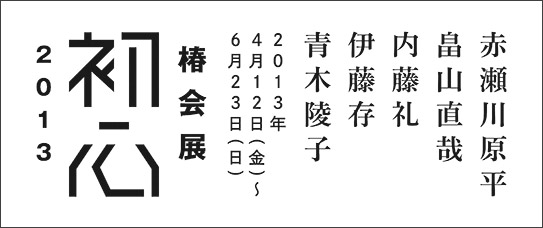
■Exhibiting Members
| Genpei Akasegawa | Born in Yokohama in 1937, lives in Tokyo. He is a painter, writer, founding member of the Street Observers Society, avant-garde artist, iIllustrator, instigator of the famous “1000-Yen Bill Incident,” and in 1981 the winner of the 84th Akutagawa Literary Prize for Chichi ga Kieta (Father is Gone, written under pseudonym Katsuhiko Otsuji). In 1989 he collaborated with Hiroshi Teshigahara on the screenplay for the film Rikyu, which won an award for best screenplay from the Japan Academy Award. His published works include: Shinkai-san no Nazo (Mysteries of Shinkai) (Bungei Shunju); Chogeijutsu Tomason (Hyperart Thomasson) and Rojinryoku (Elderly Power) (both Chikuma Shobō), and Kojin Bijutsukan no Tanoshimi (The Pleasures of Private Art Museums) (Kobunsha Shinsho). His title phrase “rojinryoku” even entered the popular lexicon in 1998. Akasegawa's most recent exhibitions include: Hanran Suru Imeji: Hangeijutsu Iko no Insatsu Media to Bijutsu at the Urawa Museum of Art (2008); Akasegawa Genpei: Sampo no Shukaku at Yokohama City Public Gallery Azamino (2010); and 2012–13 “TOKYO 1955–1970 / A New Avant-Garde” at the Museum of Modern Art in New York. His work has been collected by the Nagoya City Art Museum, the Hiroshima City Museum of Contemporary Art, the Hyogo Prefectural Museum of Art, and the Walker Art Center in Minneapolis. |
|---|---|
| Naoya Hatakeyama | Born in Rikuzentakata, Iwate in 1958, lives in Tokyo. He studied photography under Kiyoji Otsuji at the University of Tsukuba's School of Art and Design, completed postgraduate studies there in 1984. Since then he has been based in Tokyo, focusing on photographic series showing relationships between nature, cities, and photography. In 2001 he exhibited along with Masato Nakamura and Yukio Fujimoto in the Japanese Pavilion at the 49th Venice Biennale. His work has been shown in numerous solo and group exhibitions in Japan and abroad, including Naoya Hatakeyama: Natural Stories at the Tokyo Metropolitan Museum of Photography (2011). He participated in the Japanese Pavilion at the Venice Biennale's International Architecture exhibition (earning the Leone d'Oro award). His works have been collected by the National Museum of Art, Osaka, the National Museum of Modern Art, Tokyo, the Tokyo Metropolitan Museum of Photography, the Museum of Fine Arts, Houston, the Maison Européenne de la Photographie (Paris), and the Victoria & Albert Museum (London). |
| Rei Naito | Born in Hiroshima in 1961. She earned a degree in Visual Communication Design from Musashino Art University in 1985. She gained recognition for une place sur la Terre at the Sagacho Exhibit Space in 1991, and subsequently showed this work at the Japanese Pavilion at the 47th Venice Biennale in 1997. Her major solo exhibitions have included: Migoto ni harete otozureru wo mate at the National Museum of Art, Osaka (1995); Being Called, Galerie im Karmeliterkloster, Frankfurt am Main (1997); Giving Back / Reconnaissance, Asahi Beer Oyamazaki Villa Museum, Kyoto (2005); Matrix, Nizayama Forest Art Museum, Toyama (2007); Tout animal est dans le monde comme de l' eau à l' intérieur de l' eau, the Museum of Modern Art, Kamakura, Kanagawa (2009). Permanent works include: Being given at the House called Kinza, Art House Project, Benesse Art Site Naoshima, Kagawa (2001); and Matrix at the Teshima Museum of Art (2010). Her works have been collected by the Museum für Moderne Kunst, Frankfurt am Main, the Museum of Modern Art, New York, the Israel Museum, Jerusalem, and the National Museum of Art, Osaka. |
| Zon Ito | Born in Osaka in 1971, lives in Kyoto. He graduated from Kyoto City University of Arts with a BA in Conceptual and Media Art. He has presented a variety of styles of work including embroidered textiles, animation, drawing, and sculpture. His domestic and international exhibitions have included: The End of the Neighborhood at the WATARIUM, the Watari Museum of Contemporary Art, Tokyo (2003); Three Individuals: Zon Ito × Hajime Imamura × Yoshihiro Suda at the National Museum of Art, Osaka (2006); Louisa Bufardeci & Zon Ito at the Museum of Contemporary Art, Sydney (2009); Primary Field II at the Museum of Modern Art, Hayama (2010); Ways of Worldmaking at the National Museum of Art, Osaka (2011); and Beppu mimicry (KASHIMA 2012 BEPPU ARTIST IN RESIDENCE) at platform05, Oita, Japan (2012). His works have been collected by museums including the Walker Art Center in Minneapolis, WATARIUM, the Watari Museum of Contemporary Art, Tokyo, the Takamatsu City Art Museum, and the National Museum of Art, Osaka. |
| Ryoko Aoki | Born in Hyogo in 1973, lives in Kyoto. She has an MFA from Kyoto University of Fine Art. Her works are often comprised of sketches of a variety of images including plants and animals, fragments of daily life, and geometric patterns. Her major solo exhibitions have included: CRITERIUM 51 at Art Tower Mito, Mito (2002); HAMMER PROJECT Ryoko Aoki at the UCLA Hammer Museum, Los Angeles, CA (2005); and Seeds of Wild Flower, On Sundays Tokyo (2010). Her group exhibitions have included: Documenta 12 in Kassel (2007); The Door into Summer: The Age of Micropop, Art Tower Mito, Mito, Winter Garden: The Exploration of the Micropop Imagination in Contemporary Japanese Art at the Hara Museum of Contemporary Art, Tokyo (2009); and Garden of Painting: Japanese Art of the 00s at the National Museum of Art, Osaka (2010). Her works have been collected by the Museum of Modern Art, New York, Takamatsu City Art Museum, and the Museum of Contemporary Art, Tokyo. |
■Selected Works for Reference
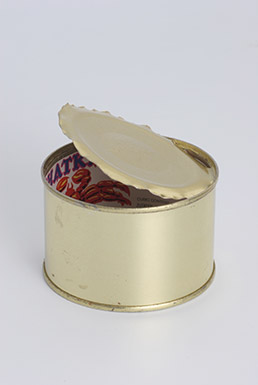
- Genpei Akasegawa
- Canned Universe, 1964/1994
- metal can, label; height 4.5 cm
- Courtesy: SCAI THE BATHHOUSE

- Naoya Hatakeyama
- Hotel Warwick #712 Genève 4 May 1995, 1995
- From series CAMERA (1995-2009)
- ※exhibiting work
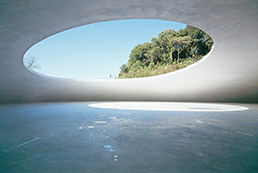
- Rei Naito
- Matrix (Bokei), 2010
- Teshima Museum of Art
- Courtesy: Fukutake Education & Culture Foundation
- Photo: Kenichi Suzuki
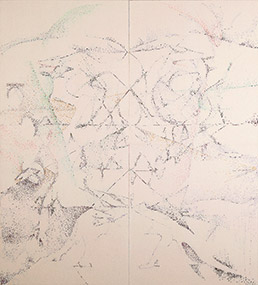
- Zon Ito
- Circle Game, 2010
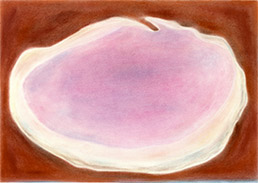
- Ryoko Aoki
- Waterhole of the Eath, 2012
■Related Events : Gallery Talk (in Japanese language only)
| (1) Roundtable Talk: Naoya Hatakeyama × Rei Naito × Tsutomu Mizusawa (Director at the Museum of Modern Art, Kamakura & Hayama / Shiseido Gallery advisor) | |
| Date: | April 19th (Fri) 18:30 - 20:30 |
| Place: | Word Shiseido, Tokyo Ginza Shiseido Building, 9th Floor |
| (2) Roundtable Talk: Genpei Akasegawa × Yuji Yamashita (Meiji Gakuin University professor) × Aomi Okabe (Art Critic / Shiseido Gallery Advisor) | |
| Date: | May 25th (Sat) 14:00 - 16:00 |
| Place: | Word Shiseido, Tokyo Ginza Shiseido Building, 9th Floor |
| (3) Talk-shop (Talk/Workshop): Zon Ito × Ryoko Aoki × Jin Fukunaga (novelist) | |
| Date: | June 22nd (Sat) 14:00 - 16:00 |
| Place: | Word Shiseido, Tokyo Ginza Shiseido Building, 9th Floor |
| Capacity: | 60 guests (each session) |
| Participation Fee: None | |
| Inquiries: | The Shiseido Gallery (Tel 03-3572-3901 or Fax 03-3572-3951) |
■Exhibition Details for Tsubaki-kai 2013 ― Shoshin
| Organized by Shiseido Co., Ltd. | |
| Duration: | April 12 (Fri) to June 23rd (Sun), 2013 |
| Location: | Shiseido Gallery Tokyo Ginza Shiseido Building, B1, 8-8-3 Ginza, Chuo-ku, Tokyo 104-0061 Tel:03-3572-3901; Fax:03-3572-3951 |
| Hours: | Weekdays 11:00 AM - 7:00 PM, Sundays and holidays 11:00 AM - 6:00 PM Closed Mondays (including holidays falling on Monday) |
| Admission is free | |